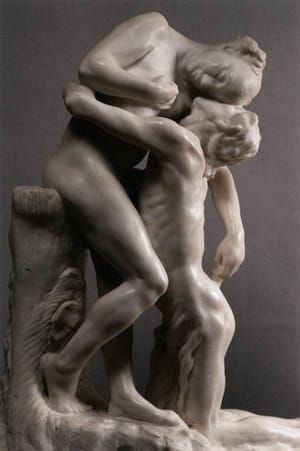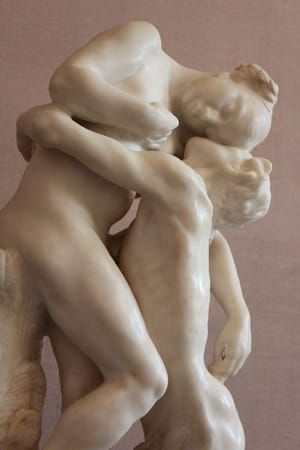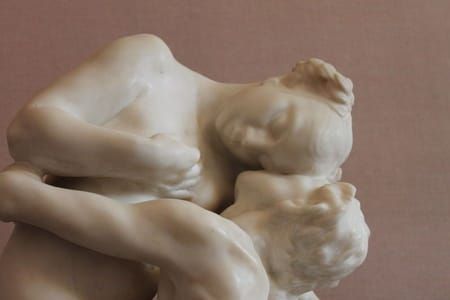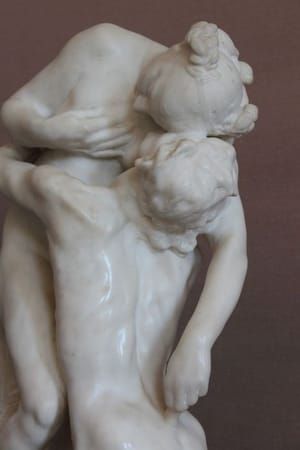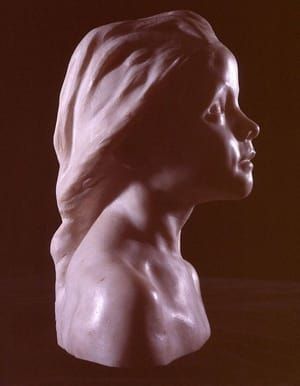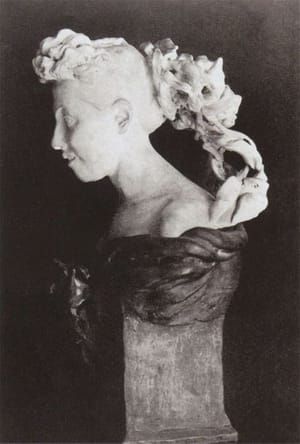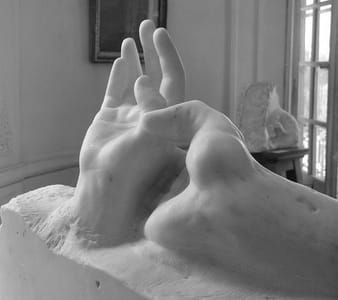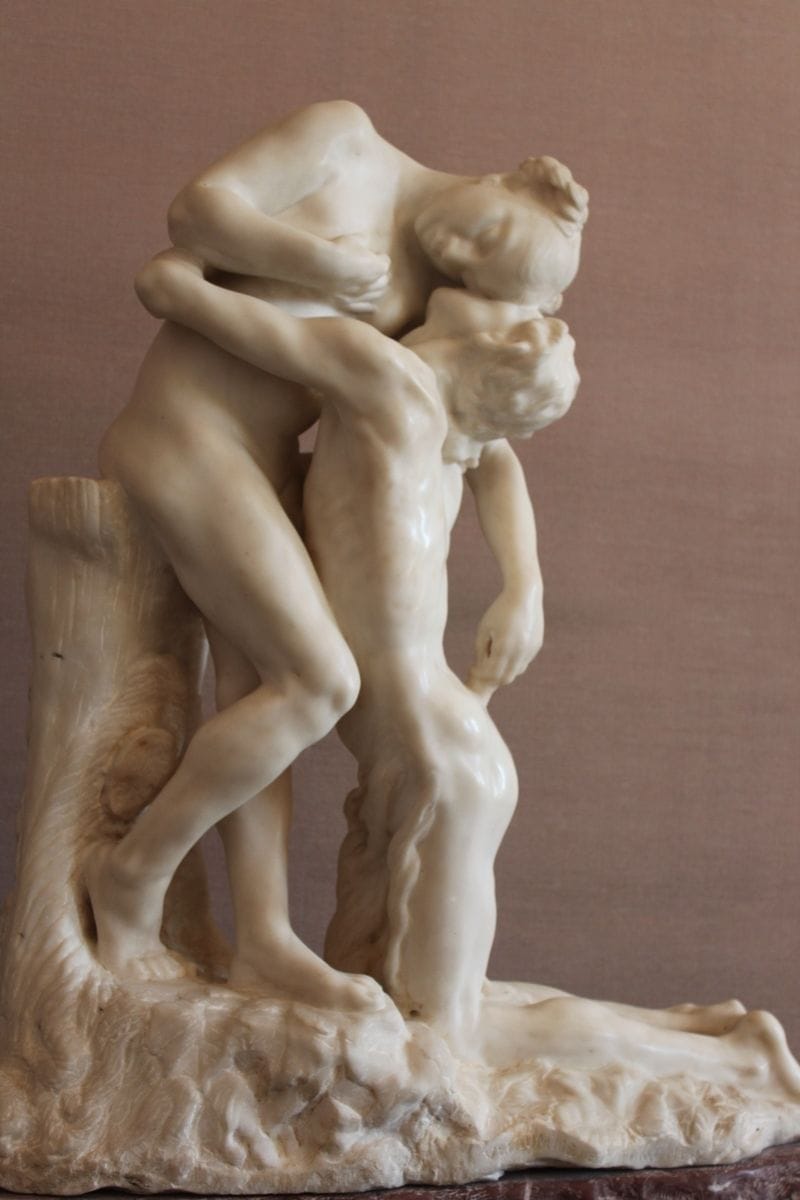

Shakuntala (Vertumnus and Pomona), 1905
Camille Claudel
Even as she collaborated on Rodin's major commissions in the studio, Claudel continued her own creative work, which the master supported and attempted to promote. Claudel decided that her first major project would be an ambitious piece celebrating the triumph of love. She sculpted two big figures evoking a legendary Indian tale of Shakuntala by the poet Kalidasa. Full of intensity and emotion, this group is a marvel of affection and modest sensuality. Passion and desire are expressed with propriety and restraint. It combines both a debt to Rodin and her autonomous style. The patinated plaster won Claudel a honourable mention at the Salon des Artistes Français.
Later, by changing only the characters' attributes, a carefully polished marble version that Claudel produced in 1905 would be rechristened Vertumnus and Pomona.
Pomona, the classical goddess of fruit, and Vertumnus, the god of transformation, are the main figures in an episode in Ovid's Metamorphoses. (http://www.wga.hu/html_m/c/claudel/vertumnu.html)
Shakuntala is described by Angelo Caranfa as expressing her desire to reach the sacred, the fruit of her lifelong search of her artistic identity, free from Rodin's contraints. Caranfa opines that her impressions of Rodin's deceptions and exploitation of her, who could not become the obedient he wanted her to be, and the society's exploitation of women were not false. Thus Shakuntala is the clearest expression of her solitary existence, the inner search, the journey within. (https://en.wikipedia.org/wiki/Camille_Claudel)
Entitled: Vertumnus and Pomon.
This sculpture was executed in various media and was given various titles. Inspired by an Indian play about Sakuntala’s reunion with her husband after a long separation caused by a magic spell, the work was first modelled in plaster circa 1886. After repeated requests for a state commission and Claudel’s crushed hopes, the work was finally carved in marble thanks to the Comtesse de Maigret in 1905. At this point, it was entitled Vertumnus and Pomona.
The bronze, cast by Eugène Blot, was shown the same year at the Salon d’Automne under the title Abandon. The subject thus moved from Hindu to Greek mythology, then onto psychology or personal history.
The variations between the different versions bear witness to the investigations pursued by the artist. The change of title, combined with the change of medium, attest to this variety of interpretations and meanings which also formed part of her research. (http://www.musee-rodin.fr/en/collections/sculptures/vertumnus-and-pomona)
Uploaded on Nov 30, 2016 by Suzan Hamer
Camille Claudel
artistArthur
Wait what?

